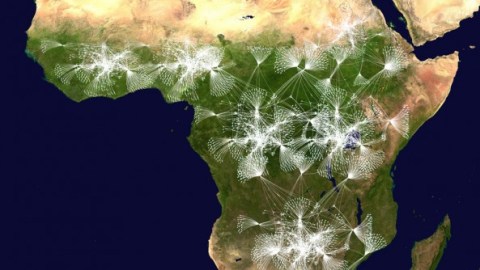Taking Matternet Into Their Own Hands

Singularity University has spawned a group of start-ups with the ambitious goal of impacting one billion people in ten years. Big Think contributor Michael Raymond del Castillo is writing profiles about this group of entrepreneurs who are looking to change the world through accelerating technology team projects. Each project is centered around a major issue like global health, poverty, energy, education, security, or space, and these are known collectively as the “10^9+ Projects.”
Last week we looked at Space Debris Research, a project that was one of several tasked to improve the lives of a billion humans within the next ten years. This week we will see how another team, Matternet, is making plans to use a swarm of “grasshoppers” to deliver lifesaving supplies to a billion humans cut off from the rest of the world.
What’s the Big Idea?
A billion humans live beyond the reach of existing ports, roads, bridges and trains. In these inaccessible regions food, water, medicine, and other supplies are hopelessly out of reach, and cutoff from the exchange economy. In contrast, the developed world has invested in its infrastructure for centuries, leaving the bottom billion literally centuries behind—and so far no nation, or group of nations, has made any meaningful progress toward closing that gap.
In a study from March of this year it was estimated that 5.2 billion phones were in circulation globally—representing approximately 75 percent of the population. Cell phones, like many other so-called exponentially growing, or accelerating technologies, have been improving at a predictable rate known as Moore’s Law. A side-effect of Moore’s Law is that not only does the technology improve, it gets cheaper.
Cheaper technology permeates even the poorest nations, until at last, something almost miraculous happens. Entire populations simply leapfrog over a traditional stage of development. In the case of cellular technology, villagers living on the other side of rivers with no bridges, or in deserts with no roads, can be seen chatting away carelessly on a cellphone, even though they never even had a land line—and they’ve probably never even seen a telephone poll.
One organization, Matternet, sees a clue in this ability of accelerating technology to leapfrog traditional stages of development. They see a way to solve the problem of villages cut of from supplies, and they have a developed a plan to do so.
Matternet’s mission is to connect the entire planet to the exchange economy in much the same way that the cell phones and the Internet are connecting the world to information. “We want to use a network of unmanned aerial vehicles (UAVs) connected by robotic ground stations and an AI driven software system. We want to do what the Internet did for information but do that for physical things,” project manager and self-proclaimed “harnesser of knowledge flows,” Justine Lam, recently told Big Think.
With Matternet, a villager in need of medicine simply picks up their cell phone and places a call to the neighboring city. The medicine is loaded onto the “grasshopper” and sent on its way. A landing pad at the destination transmits a beacon allowing the grasshopper to navigate precisely to the drop-off point.
Matternet’s autonomous delivery system involves “Quadracopters,” homing beacon landing pads, and solar recharging stations. (Photo credit: Cyber Technology (WA) Pty/Ltd.)
Lam and a team of nine other Singularity University students set out to improve the lives of a billion of their fellow humans, and in a matter of weeks came up with Matternet and its three phases.
Phase I: “Aircraft kits” including plug-in charges and a quadracopter drone, or “grasshopper,” capable of transporting 1-2 kilograms of cargo.
Phase II: Solar-powered stations recharge autonomous aircraft capable of transporting 50 – 100 kilograms of cargo.
Phase III: Networks of grasshoppers expand and overlap. This AI driven infrastructure will integrate city and village and be able to transport 500 – 1000 kilograms of cargo.
What’s the Significance?
It is this in third phase that the exponential power of the technology takes shape in a new way, creating a web of connectivity unlike anything we’ve ever seen.
Ray Kurzweil, futurist, inventor, and co-founder of Singualrity University says, “[Matternet] combines all of the desirable attributes especially replacing twentieth century centralized infrastructure with decentralized distributed and self-organizing networked resources.” ‘Self-organizing’ is Kurweil-speak for what most people know as Artificial Intelligence. But we’re not there yet.
For the time being the Matternet team is focusing on undeveloped and underdeveloped regions. Not only is the demand more imminent, but airspace restrictions are less restrictive.
They have an informal agreement with the Dominican Republic, which hopes to use Matternet to help rebuild Haiti. They’ve spoken to airport officials in Nigeria, nonprofits in Nepal, and social enterprises in India. And they are currently holding discussions with venture capitalists interested in providing seed funding.
Matternet is thinking big, and seems to have the commitment to make their thoughts a reality.
Watch the video here:
Keep your eyes open next week as we explore another of Singularity University’s big ideas. Primerlife is an organization that will use Artificial Intelligence to interpret your personal genome and help you make wellness decisions. Just last week they were accepted into the Skolkovo Foundation’s business incubator program in Moscow.





